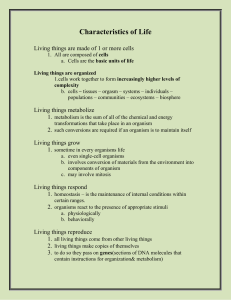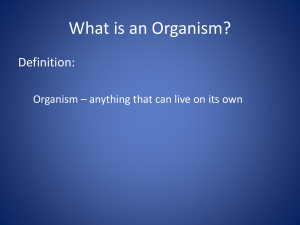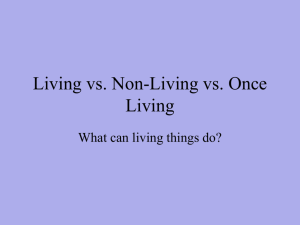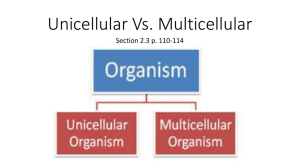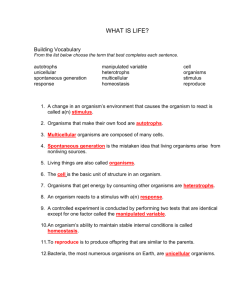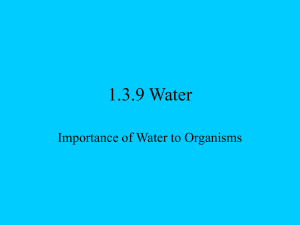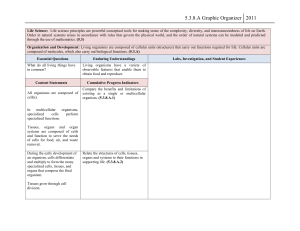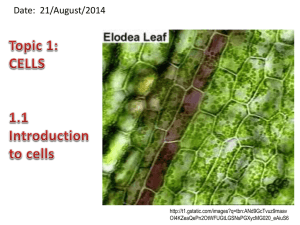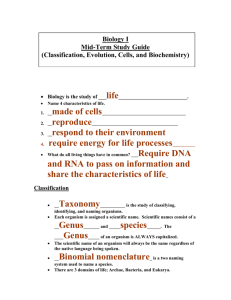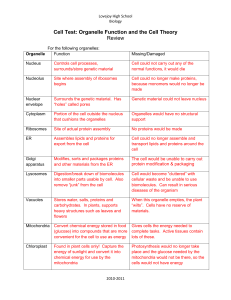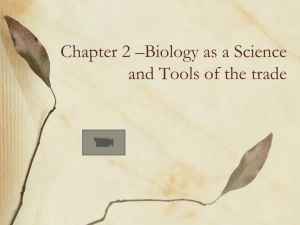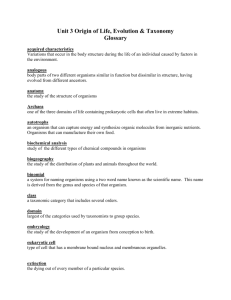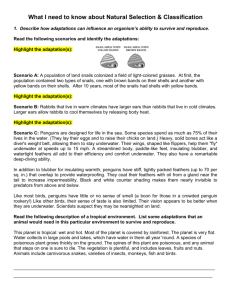Aim#4-Metabolic Processes - Manhasset Public Schools
advertisement
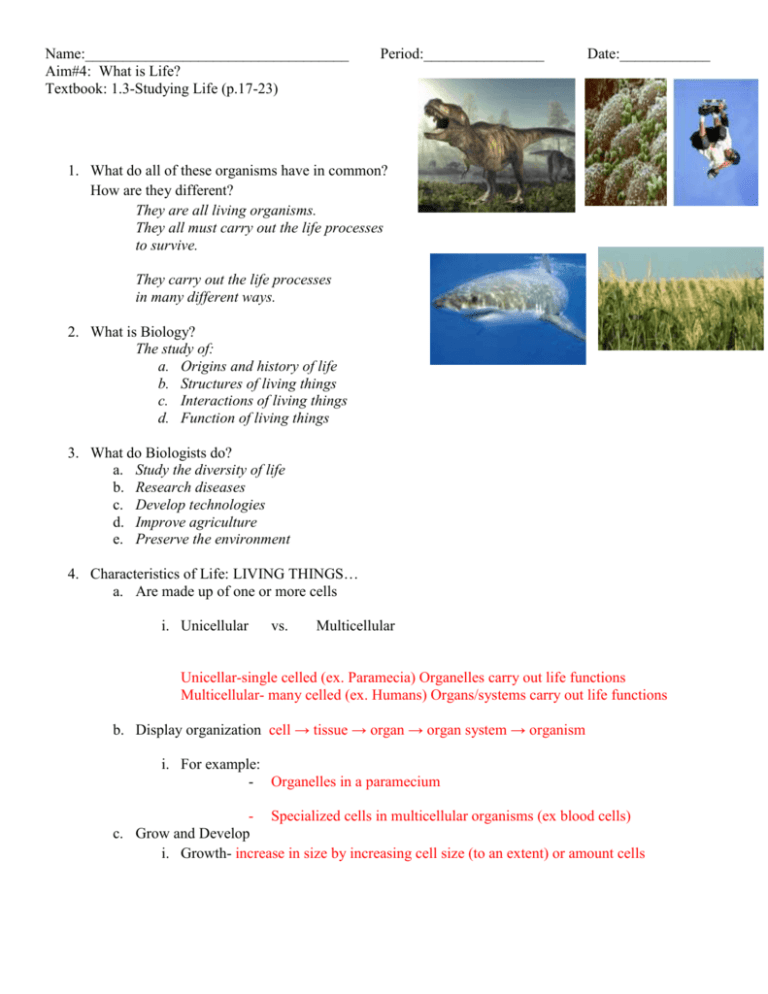
Name:___________________________________ Aim#4: What is Life? Textbook: 1.3-Studying Life (p.17-23) Period:________________ Date:____________ 1. What do all of these organisms have in common? How are they different? They are all living organisms. They all must carry out the life processes to survive. They carry out the life processes in many different ways. 2. What is Biology? The study of: a. Origins and history of life b. Structures of living things c. Interactions of living things d. Function of living things 3. What do Biologists do? a. Study the diversity of life b. Research diseases c. Develop technologies d. Improve agriculture e. Preserve the environment 4. Characteristics of Life: LIVING THINGS… a. Are made up of one or more cells i. Unicellular vs. Multicellular Unicellar-single celled (ex. Paramecia) Organelles carry out life functions Multicellular- many celled (ex. Humans) Organs/systems carry out life functions b. Display organization cell → tissue → organ → organ system → organism i. For example: - Organelles in a paramecium - Specialized cells in multicellular organisms (ex blood cells) c. Grow and Develop i. Growth- increase in size by increasing cell size (to an extent) or amount cells ii. Development- increase in ability or skill (differentiated cells during embryonic development) d. Reproduce- produce offspring i. How can we explain individual organisms that do not reproduce? (For example, neutered dogs and cats) Reproduction is necessary for a species (so they don’t become extinct), but not for each individual organism ii. Species- a group of organisms that can reproduce fertile offspring e. Respond to stimuli i. Stimulus- change in the environment ii. Response- body’s reaction iii. Examples: Hot- sweat, cold-shiver, increase blood sugar-produce insulin f. Require energy i. Metabolism: sum of all life processes (chemical reactions) ii. Autotroph vs. Heterotroph Autotroph- makes own food Heterotroph- consumes food g. Maintain Homeostasis i. Homeostasis- stable internal environment (balance, stability, equilibrium) ii. For example: changes in altitude h. Have adaptations that can evolve over time (evolution) i. Adaptation: trait an organism is born with that helps it survive in its environment ii. Why are adaptations important? Affects survival Life Processes/Activities * MR. STRANGER M METABOLISM R REGULATION S SYNTHESIS T TRANSPORT R RESPIRATION A ASSIMILATION N NUTRITION G GROWTH E EXCRETION R REPRODUCTION The chemical reactions that happen in the cells of living organisms to sustain life (includes all of the life processes) A ___________________________________ to a change in the internal/external environment. Building up of ____________________________ by joining together small molecules Intake (_______________) of needed materials and their distribution (_______________) Breaking down food to generate ____________________ When an organism incorporates large molecules into itself Intake of food (_______________), breaking it down into usable forms (_______________), and eliminating any food that cannot be digested (_______________) Increase in _______________ of an individual or cell Getting rid of _____________________________ (Ex. urine or sweat) Making of ____________________ Locomotion- self initiated movement (helps organisms get food, escape enemies, find a mate, seek shelter) *The sum of all of these activities = ________METABOLISM_________________________________________________ * Why do individuals need to carry out all of these life processes? TO MAINTAIN ______________HOMEOSTASIS______________________________!
